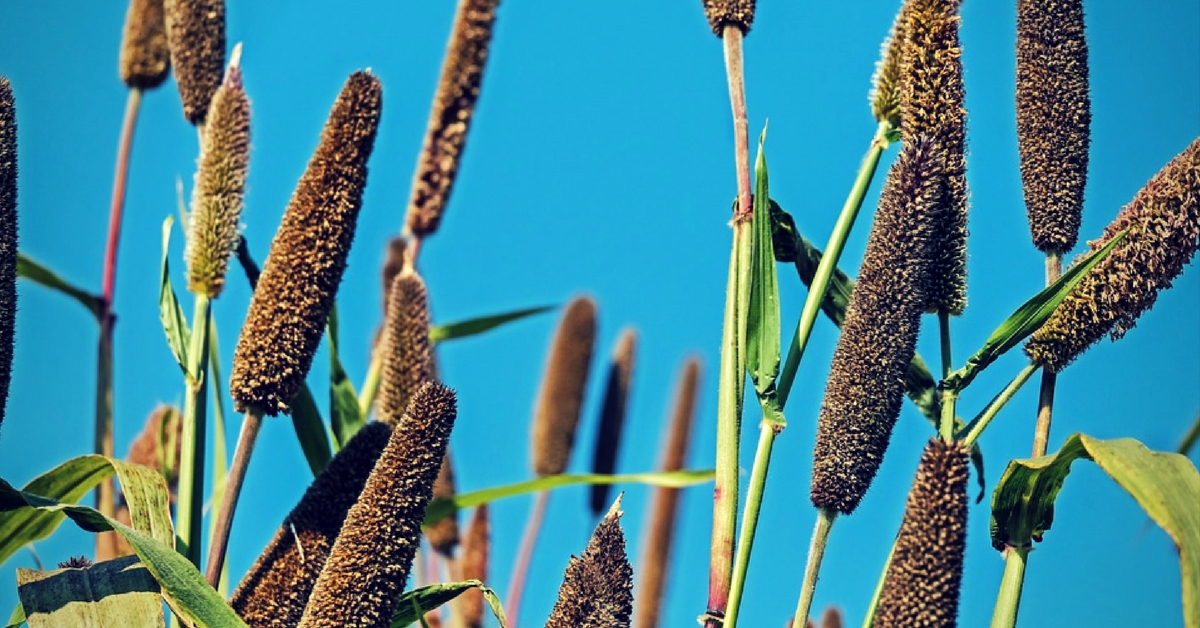Through Schools and the PDS, the Humble Millet Is Battling India’s Health Problems
Millets are a great source of vital nutrients.

India has a two-pronged problem. According to IndiaSpend, on the one hand, more than half of the women, children and one in five men are anaemic, and on the other hand, a section of society is reeling from obesity and diabetes.
To tackle hunger and malnutrition, the Government launched the National Food Security Act in 2013, to provide subsidised food grains to approximately 2/3rds of India’s 1.2 billion people.
Recently, the Agriculture Secretary, S.K Patnaik, mentioned that the Union Government plans to include coarse grains, such as jawar (Sorghum), bajra (pearl millet) and ragi (finger millet), in the Public Distribution System (PDS), and the mid-day meal programme in schools.
As a result of this, beneficiaries of India’s PDS, which constitute about 813 million of the country’s poorest, will get millets at ₹1/kg. These people form 75% of the rural, and 25% of the urban populace.
The Green Revolution introduced high-yielding varieties of wheat and rice. The Government also encouraged rice and wheat cultivation. As a result, a large amount of polished rice and refined wheat flour came into focus, and millets were wrongly considered a ‘poor man’s food.’ Urban India wrongly believed wheat and rice to be superior to millets.
Slowly but surely, millets disappeared off the plate of the average Indian. In 2010, the average annual per-capita consumption of sorghum and millets fell from 32.9 kg to 4.2 kg, and that of wheat doubled from 27 kg to 52 kg.
Bringing millets back is a reversal of the food preference trend in place for more than half a century. Millets were shunned by the urban class because they wrongly presumed it is food for the poor. The poor on the other hand, were receiving rice and wheat in subsidised quantities.

Increasing millet production may not be easy—India’s average annual millet production, at 17.79 million tonnes, between 2010-2011 and 2014-2015, is less than a tenth of the 215 million tonnes of rice and wheat produced. Large-scale production and farming would entail a complete change in India’s cropping patterns.
However, the move could benefit the agricultural sector. Millets are a hardier crop than wheat and rice. Some varieties grow well even in Rajasthan. They are also less resource-intensive to grow than wheat and paddy. The ability to grow in poor soil and less water makes millets easy to grow.
A recent government press release claims “In times of climate change millets are often the last crop standing and, thus, are a good risk management strategy for resource-poor marginal farmers.”
Millets, unlike wheat and rice, are also nutritionally rich. They have a low glycemic index, making them ideal for diabetics, and they contain more iron and calcium and other vital minerals, than wheat and rice.
The average urban consumer might walk into a store, to buy quinoa. Equally nutritious, and a fraction of the same price, millets can be a lasting, sustainable solution for people who are into healthy eating.

Now, millets are going to get a makeover, and bracketed as a ‘nutricereal’ by the Government. With every needy citizen covered by the PDS, the authorities have begun to focus on the diet of the average Indian. The millets are being re-packaged, making them appealing to all.
Some people cannot come to terms with the way millets taste. However, the right cooking techniques and a great recipe can do the trick. Arun Sundararaj, Executive Chef at the Taj Mahal Hotel in Delhi, said to LiveMint, “It is easy to include millets in the diet as they are very versatile. Millet pancakes can be eaten for breakfast, and millets can be prepared like rice, substituted for potatoes when cooked with gravy, and even make a great addition to bread. Millets also make a great bed for roasted vegetables and stews.”
Millets thus seem to be a viable solution for India, where citizens with lifestyle disorders can consume them to maintain sugar and cholesterol levels. They also keep cancer at bay.
You may also like: Droughts Don’t Scare These Millet-Producing, Self-Sufficient Karnataka Farmers!
The Union Agricultural Minister, Radha Mohan Singh, sent a proposal to the United Nations to declare 2018 as the “International Year of Millets.”
The humble millets are thus, all set to make a comeback, to Indian homes all over. Promoted by the Government and health authorities, they can help Indians fight back some of their health problems.
Like this story? Or have something to share? Write to us: [email protected], or connect with us on Facebook and Twitter.
NEW: Click here to get positive news on WhatsApp!
This story made me
-
97
-
121
-
89
-
167
Tell Us More
We bring stories straight from the heart of India, to inspire millions and create a wave of impact. Our positive movement is growing bigger everyday, and we would love for you to join it.
Please contribute whatever you can, every little penny helps our team in bringing you more stories that support dreams and spread hope.



















